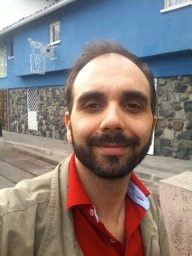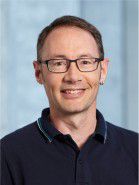
Symposium: Ceramics for agriculture and livestock
Scope of the Symposium:
Materials science has been impacting the technological advance of agriculture and livestock production in different ways. Although the recognized importance (such as metals as agriculture tools), ceramic materials play a fundamental role often neglected, where there are many possible technological gaps to be still solved. Examples include the preparation of catalytic materials and its supports for the production of fertilizers and agrichemicals; the development of sensing materials to detect gaseous emissions in field; the production of scaffolds and porous matrices for controlled drug delivery (in animal health); among others with high potential to produces technology breakthroughs – and consequently, impacting on the food quality and productivity. These topics demand research in synthesis, including nanoparticles, and device design connected to these final applications.
Therefore this symposium focuses on the recent developments of ceramic science and technology with prospective application or impact in agriculture and livestock. Researchers are invited to show their findings, especially those with cross-main nature (i.e., involving fine chemistry, physico-chemical characterization, biological interaction and agronomical impact) and contextualize to agriculture needs. The discussion will cover not only defined application but also prospective applications for ceramic products or processes are welcome.
Abstracts on the following subjects may be submitted:
- Nanoparticulate catalysts (synthesis, characterization) applied to:
- Chemical fixation of N2 to N-based fertilizers
- Chemical fixation of CO2 and greenhouse gases
- Abatement of water contaminants, including (but not limited to) pesticides
- Chemical conversion of biobased molecules
- Ceramic sensing materials and devices (synthesis and processing):
- Sensors for NH3, NH4+, moisture and other agriculture productivity indicators;
- Sensors for water contamination and food quality (juice, wine, etc)
- Sensors applied to animal health and production (diseases early detection, analysis of feed, beef quality, etc)
- Low-temperature gas sensors for in-field application
- Slow and controlled release ceramic materials:
- Synthesis and processing of porous and mesoporous materials (including hierarchical structures) for nutrient and drug release,
- pH and temperature responsible adsorbent materials
- Nanoparticles as fertilizers: solubility of oxides (Zn, Mn, Mo and others) and phosphates as potential nutrient sources for plants
- Nanocomposite materials for controlled release of agrichemicals and drugs for animal health
- Food conservation and quality:
- Packaging materials for food conservation (bactericidal particles, ethylene absorbers, etc)
- Food quality assessment (smart packaging and smart labeling)
Symposium Organizers:
- Chairman: Caue Ribeiro
- Embrapa, Brazil
- E-mail: [email protected]
- Co-chair: Markus Niederberger
- ETH, Swiss
- E-mail: [email protected]
- Nicholas A. Kotov, University of Michigan, US
- Swadeshmukul Santra University Central Florida, US
- To be confirmed.
List of invited speakers:
Scientific Committee:
Organizers information:
 |
Caue Ribeiro Caue Ribeiro is Senior Researcher at Embrapa (Brazilian Agricultural Research Corporation). He is materials engineer (Federal University at Sao Carlos, UFSCar, Brazil, 1999) and PhD in Physical Chemistry (UFSCar, 2005). After a period in the private sector, he joined Embrapa as Full Researcher in Instrumentation Center in 2007. Currently he is the coordinator of Agronano Network – a research network for nanotechnological applications in agriculture, involving about 150 researchers in Brazil and abroad (https://www.embrapa.br/nano). His primary research interests include the development of synthesis routes to produce heterogeneous catalysts (mainly inorganic nanoparticles) for water decontamination and energy production, and development of nanocomposites for slow/controlled release in agriculture. |
 |
Markus Niederberger Markus Niederberger is Full Professor for Multifunctional Materials in the Department of Materials at ETH Zurich, Switzerland, and Chair of the Laboratory for Multifunctional Materials. He concluded his studies of chemistry at ETH Zurich with a diploma in 1996 and continued at the same university to earn his PhD in Chemistry in 2001 with Prof. Reinhard Nesper. From 2001-2002 he worked as a postdoctoral fellow at the University of California, Santa Barbara, USA, with Prof. Galen D. Stucky. He then transferred to the Max Planck Institute of Colloids and Interfaces in Potsdam, Germany, where he was a group leader from 2002-2006 in the Colloid Department of Prof. Markus Antonietti. Professor Niederberger's research focus is on the chemical synthesis of inorganic functional materials for energy storage and conversion, gas sensors and electronics. |